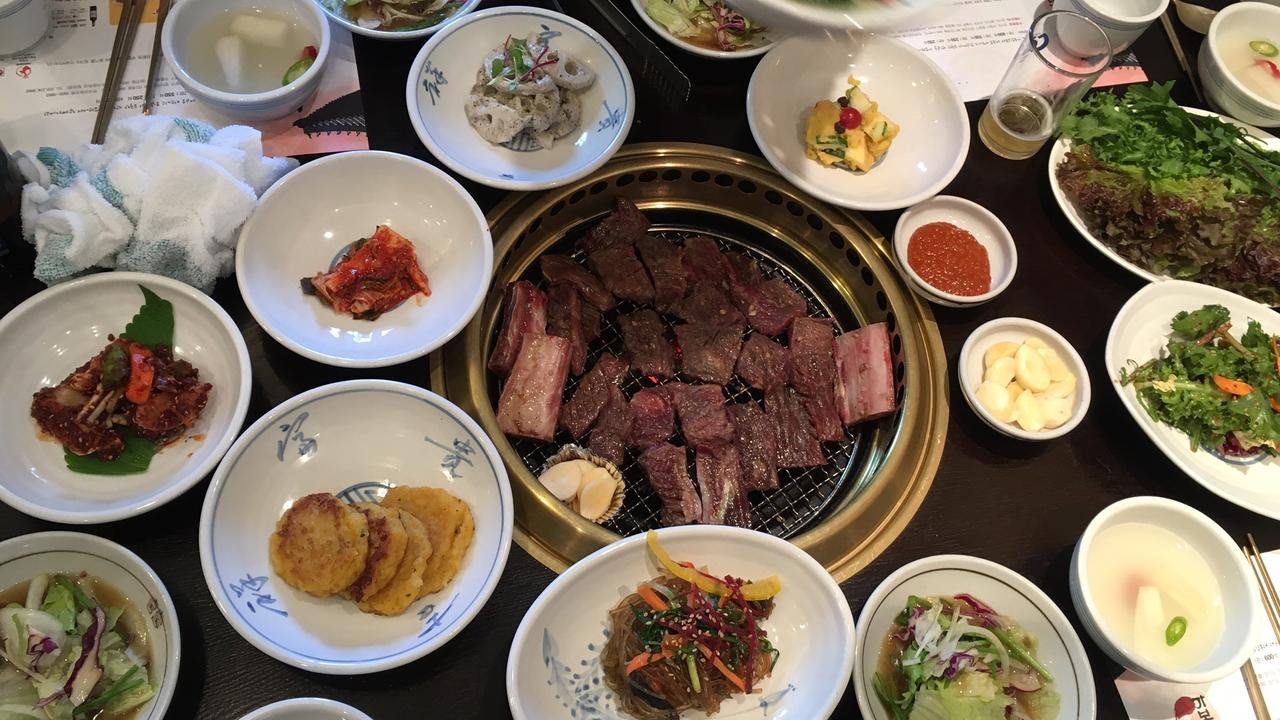Five food-lover’s facts about South Korean cuisine
by Guest author on 12th June 2017

If you love food, you’ve probably encountered South Korean favourites like kimchi and bibimbap, but it’s astonishing how little of South Korea’s fantastic cuisine has made the jump to the west. We’ve relished learning more on our recent travels there, so here are a few tasty tidbits to whet your appetite...
Bring on the banchan
Traditional South Korean meals are something of a mini-feast. This tempting spread of small dishes, known as banchan, is served with a cooked rice dish or noodles as a base, and normally includes a soup known as ‘guk’ or ‘tang’ - guk is light and thin, like a pho, while tang is thicker, more towards the chowder or Scotch broth end of the soupy scale. Other classic banchan dishes include seasoned veg, grilled or stir-fried meat, different types of kimchi (salted veg), egg custard, pancakes (‘jeon’), a hearty stew, potato salad, pickles and fermented condiments. The little dishes get refilled as you eat, and there’s a huge joy to trying out different flavour combinations.
Take a bite of bindaetteok
While Annie was studiously researching South Korean streetfood on a recent inspection trip to Seoul’s Gwangjang Market, she fell in love with these thick pancakes made of ground mungbeans and crammed with delicious things like pork and kimchi. Pancakes feature in many South Korean meals, but these are no stodge-fest - they’re more like bubble & squeak or monjayaki than a crepe or an American pancake. A fresh mix of beansprouts, kimchi and seasoned mixed pork is coated with a smooth bean and rice batter, then fried quickly until golden. The result is filling and thoroughly delicious! We also like the fact that they’re made with beans instead of wheat - check our gluten free travel blog for advice on travelling with a gluten intolerance.
Seoul’s food ‘towns’
Food is a national obsession throughout South Korea, but in Seoul it’s reached the stage where whole streets are dedicated to one dish. The Majang meat market is a good place to try Korean barbecue, one of the dishes that can be found in the west - perhaps because barbecues are familiar, whilst the experience of cooking your own food at your restaurant table is something of a novelty. If you develop a taste for pancakes, try the different varieties available in Jeon Town around Gongdeok.
Kimbap - just don’t mention sushi
It’s not a Japanese dish, but kimbap does look a bit like a futomaki roll, with a sheet of roasted seaweed wrapped around a layer of juicy rice, and a savoury filling at the core. Flavours range from cooked beef to tuna mayo and spam, with spinach and pickles, and it’s a popular streetfood - kimbap is filling, healthy and easily eaten on the go.
A multitude of kimchis
You can’t talk about Korean cuisine without mentioning kimchi, a 2,000 year old recipe that has developed an almost mythical reputation, and is the national dish of both South and North Korea. There are around 250 varieties - the common ingredients are seasoned vegetables and salt. Some varieties are fermented, not all are spicy, and numerous different vegetables are used, although napa cabbage and radishes are popular. When a Korean just uses the one word ‘kimchi’, they’re usually talking about a classic variety made with salted napa cabbage that’s been spread with a paste of ginger, garlic, fish sauce, fermented shrimp and hot chilli. The various kimchis can be served hot or cold, and are used as an ingredient in many other Korean dishes.
If you’re ready to savour some of South Korea’s many flavours, have a look at our recommended South Korea holidays, or give our Destination Specialists a call.